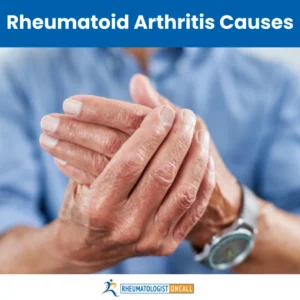SHARE
I am positive you have all heard of arthritis. Arthritis is an epidemic of our century. According to the CDC, arthritis affects 24% of US adults or approximately 58.5 million people. Some forms of arthritis are more commonly seen. Regardless of whether you are a doctor, a patient, or a person simply interested in learning more, arthritis is undoubtedly a topic that you should know about and learn how to recognize, prevent or help those suffering from it.
In this article, we will be discussing the:
- What Is Arthritis?
- What Are The Most Common Symptoms?
- Who Does Arthritis Affect?
- What Are The Most Common Types of Arthritis?
What Is Arthritis?
Let’s begin! The word “arthritis” comes from the Greek roots “arthro,” meaning “joint,” and “-itis,” meaning “inflammation.” Is all arthritis caused by inflammation? We will discuss this below. Arthritis is a disease affecting the joints and the spine primarily. It is an epidemic of our century; over 200 conditions affecting the joints or spine are categorized as “arthritis.”
The symptoms can be acute or chronic. Acute arthritis lasts days to weeks and is usually related to a traumatic event or an infection. Chronic arthritis manifests for a long time as pain can persist for months to years. Chronic arthritis is often seen after years of inflammation or many traumatic injury to the joints.
Naturally, this leads us to the question: what are the most common forms or types of arthritis? We will discuss that soon, but let’s find out more how to recognize arthritis and what are the common symptoms of arthritis.
What Are The Most Common Symptoms?
As said, there are many types of arthritis, but they all have in common a few clinical features, such as:
- Pain and tenderness (or pain with palpation)
- Swelling
- Stiffness
- Warmth
- Difficulties using the joints (think grabbing a fork, walking or bending)

Pain is the trigger of rheumatology consultation. Pain can come gradually or even overnight in some cases, e.g, gout attack. Some patients have severe pain, especially when they try to walk or even with sitting or rest. Other patients have just tenderness over the joint when palpation is attempted. Pain level varies from person to person and is very subjective to the patient’s pain tolerance.
Swelling of the joints can be present but is not always seen. Some patients can develop swelling of the knee due to fluid accumulation or even due to swelling of the surrounding tissues due to inflammation.
Stiffness can be seen in osteoarthritis and inflammatory arthritis such as Rheumatoid arthritis. The difference is related to the extended time and the relationship with movement. For example, people with osteoarthritis will have up to 30 minutes of morning stiffness in their joints. On the contrary, people with rheumatoid arthritis will present with prolonged morning stiffness of more than one hour that will be released by movement.
Inflamed joints will be warm. A warm knee is a sign of an inflamed knee, as usually, our knees should be the coolest part of the body. So, pay attention if your joints are warm or cold.
If you struggle to use your hands to brush your teeth, wash your hair or keep a cup of coffee, this might also be a sign of arthritis. Look carefully for these symptoms and report them to your physician to evaluate your situation further.
Who Does Arthritis Affect?
Contrary to popular belief, both young and elderly adults could be affected by arthritis. Yes! Arthritis affects all ages, even kids. Although there are many causes of arthritis, the result is the same: the joints’ cartilage, which is the part that covers the bone, gets slowly destroyed. Being diagnosed with arthritis early will decrease your chances of developing severe consequences such as chronic pain, difficulties ambulating, and lower quality of life.
What Are The Most Common Types of Arthritis?
As stated earlier, arthritis remains an epidemic of our century. Though there are so many, I encourage you all to read more about this subject, as we will be addressing the most common types of arthritis treated in the field of rheumatology. In this Youtube video, I describe the most common types of arthritis.
Osteoarthritis
Osteoarthritis, or degenerative arthritis, is a type of arthritis that we mainly develop later in life as we tend to overuse our joints over time. Like we use the tires of our car, because of overuse, our joints will develop “wear-and-tear,” which leads to a “low degree inflammation” of the joints.
Inflammatory Arthritis
Inflammatory arthritis is a disease that primarily affects young people but is not limited to them. There are two major causes of this form of arthritis: autoimmune diseases (Rheumatoid arthritis, Psoriatic Arthritis, Ankylosing spondylitis, or systemic lupus) and crystal-induced arthritis (gout, pseudogout). In all these cases, chronic and excessive inflammation will cause rapid destruction of the joints, loss of function, and poor quality of life.
Reactive Arthritis
The third type is called “reactive arthritis.” Reactive arthritis is usually triggered 1 to 4 weeks after an infection, most commonly from the gut or urinary tract infections. Infections like Hepatitis B, Hepatitis C, HIV, and even a tick bite (e.g., Lyme disease) can cause reactive arthritis. In most cases, treating the cause of the infection will rapidly improve the symptoms of arthritis.
How Do Rheumatologists Differentiate Between Forms of Arthritis?
In rheumatology, to differentiate between these many different forms, we take a very detailed clinical history from the patient, and we make a thorough physical exam. Look at this Youtube video to see our approach.
In these, we look for a few important aspects:
- How did the pain start?
- What joints are affected?
- If swelling is present, is stiffness associated with joint pain?
- Does the patient suffer from morning stiffness, and how long does it last?
- How does movement affect stiffness?
Let’s compare osteoarthritis (OA) with rheumatoid arthritis (RA).
Rheumatoid arthritis (RA), as a type of inflammatory arthritis, usually affects young patients, while osteoarthritis (OA) affects those more advanced in age.
| If it Is RA… | If it is OA… |
|
|
Arthritis affects more than 58.5 million American citizens, from young to elderly. The most common types of arthritis include osteoarthritis, inflammatory arthritis, and reactive arthritis. Rheumatologists use the patient’s clinical history, thorough physical exams, laboratory tests, and also imaging studies to make the diagnosis.
If you have any of these symptoms, we strongly recommend you schedule an appointment and be evaluated by a physician that will provide you with an accurate diagnosis and treatment plan. Dr. Girnita’s practice, Rheumatologist OnCall, offers you convenience, appropriate time and an immediate solution to be diagnosed and treated appropriately. Our practice will offer you many resources including nutrition and physical therapy, all conveniently accessible from the comfort of your home. Read Dr. Girnita’s other blog posts and subscribe to our Youtube channel.
Contributors to this article
Diana Girnita MD, PhD and Ana Girnita
















